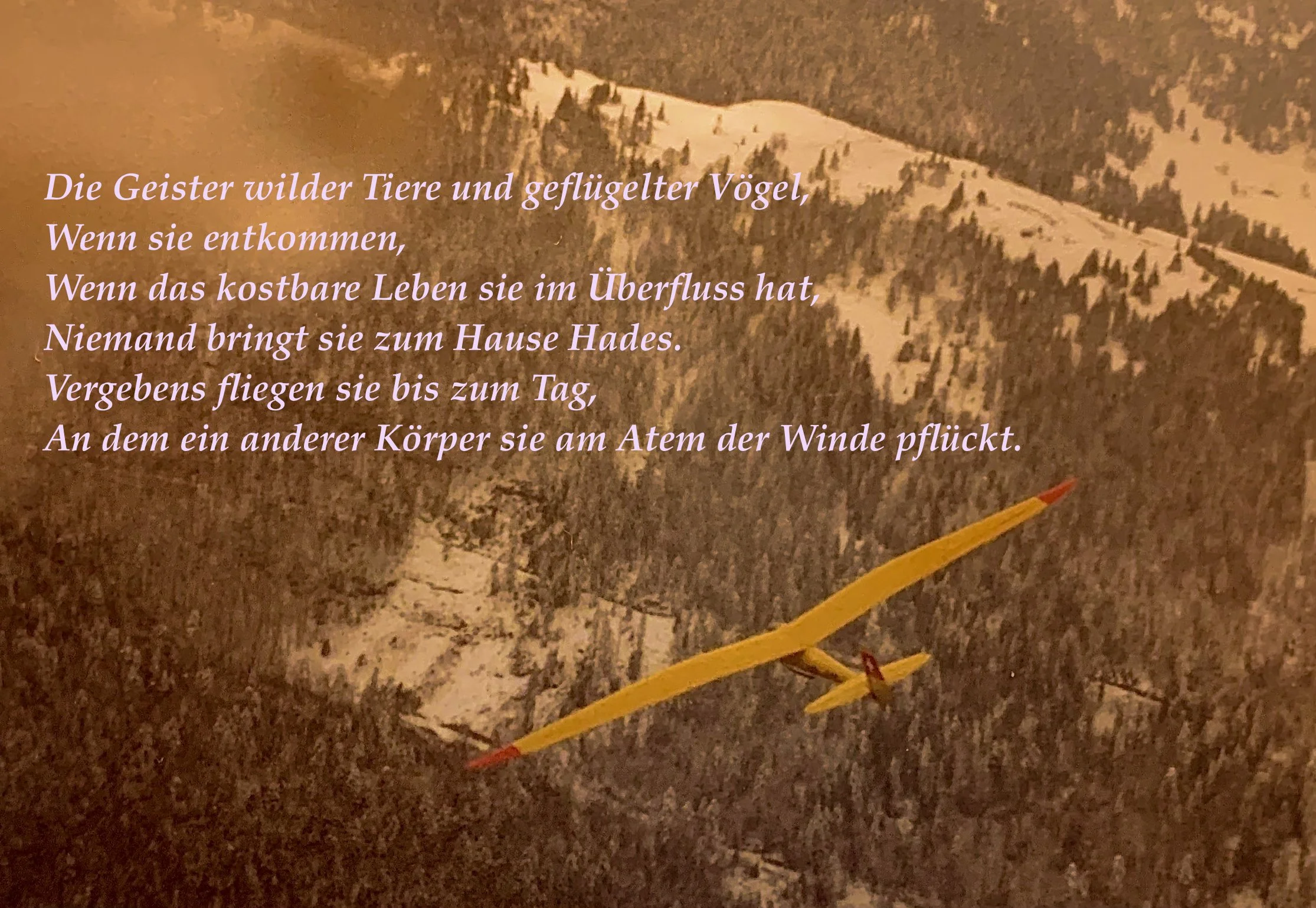Gliding - The Art Of Flying
Besides ballooning, gliding is considered to be one of the most romantic arts of flying. No other flying machine shares as many traits with the bird as the sailplane. Neither transporting freight, nor passengers, nor concealed weapons in its belly, the sailplane is designed without any other purpose than being magnificent at flying. Conceived to operate safely at up to 270 km an hour, weighing 450 kg for a typical wingspan of 20 m, it behaves like an elegant destrier in the hand of its pilot.
Compared to his motorized colleague, the glider pilot is either cheered as the poet of the clouds, or booed as a kind of 'sky saunterer'. He is the guy who nostalgically gazes outside the window during boring professional meetings, following the development of cumulus clouds over distant mountains.
Indeed, the successful glider pilot must have developed a kind of shamanic skill enabling him to read the sky. Flying is an energy consuming endeavour. Energy might be provided either by kerosene or gasoline for aircraft, or throughout biological processes for most of the birds. Together with Eagles, Condors and Vultures do glider pilots play in another league: they borrow the energy of their flight from the atmosphere.
Thus the necessity for the shamanic vision. Where pedestrians see landscapes, clouds and sunshine, the glider pilot reads convective cumulus, lee waves, convergence zones. Those wonderful birds bear this feeling since time immemorial.
Gliding is an inconspicuous sport. Once the pilot has released his sailplane from the tow aircraft, it almost disappears from the sight of the terrestrial observer. Only the attentive sky gazer might notice a cruciform silhouette circling high in the shadow of a cumulus, or tracing its route along a rocky crest in the Alps.
For the pilot, the landscape unfurls like a symphony. He speaks to the hills, to the plains, to the mountains. He perceives the deep green of the forests, the light green of cultures, the yellow of the corn, the red dots of the tiny village roofs. He crosses passes, lets his or her wing slide in front of walls of rocks, seracs and glaciers.
In the evening, while quietly gliding back to his home airfield, he contemplates the incredible change of mood in the vesperal atmosphere. Long shadows sculpt each feature of the terrain. Last light rays marry with the evanescent summer dust to produce gorgeous sunsets.
At that very moment, flying strait in the sedated air without any impulse on the commands, he/she notices that the lone movement in the whole flying machine is the beating of her or his own heart.
Spalinger S18 HB-411 belonging to Willy Schwarzenbach over the Jura mountains, 1973.
The spirits of wild beasts and winged birds, when they perish, when precious life has them in abundance, no one brings them to Hades' house. Vainly do they fly till the day, when another body plucks them from the breath of the winds. - Antic greek statment, far ahead of the christian epoch -.
